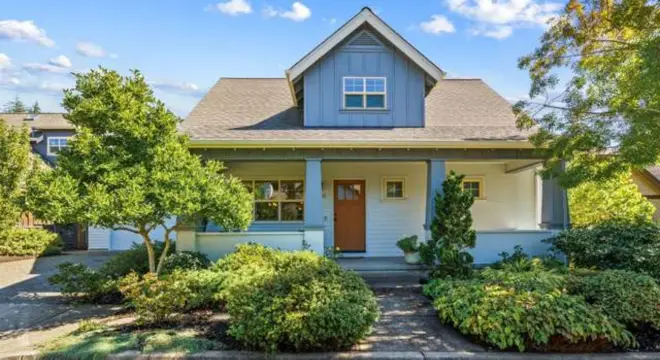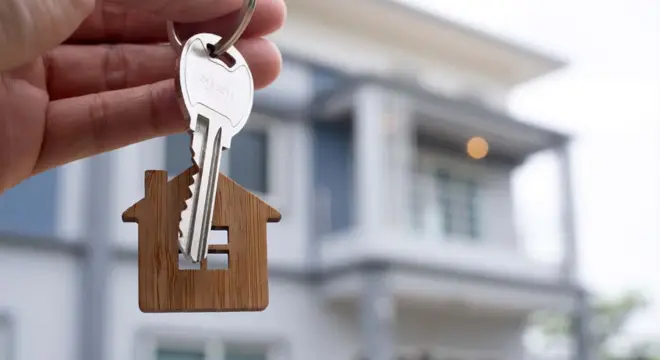How to Buy Your First Investment Property in 5 Clear Steps
Buying your first investment property isn’t just about finding a “good deal.” It’s about building something real—an asset that works for you while you sleep. But if you’re new to this, I’ll be honest: it can feel overwhelming fast.
I’ve seen smart people lose money not because they were careless, but because they jumped in without a roadmap. That’s why I’m not going to hand you vague tips like “do your research” or “talk to a realtor.” You deserve better.
In this guide, I’ll walk you through five practical steps that anyone—yes, even first-timers with a modest budget—can take to buy an investment property with confidence. These steps are based on what’s actually working today, not outdated advice or recycled blog content.
Whether you want monthly cash flow, long-term appreciation, or just a way to stop depending on one paycheck, real estate investing can get you there. But you have to do it right from day one. No guesswork. No hype.
You’re not just buying a property. You’re buying into a strategy. So let’s make sure it’s a smart one.
Let’s start with the foundation—your finances. That’s where everything else depends.
Step 1: Build a Financial Foundation Before You Even Start Looking
If you’re serious about buying your first investment property, don’t start with property listings. Start with your numbers. Because the truth is, most first-time investors don’t lose money on bad properties—they lose it because they weren’t financially prepared.

I’ve had clients tell me, “I’ll figure out financing later,” and I always give the same answer: No, you won’t. You’ll either pay more, get stuck, or delay your goals.
Here’s what you need to do first:
Know Your Credit Score (and What It Means to Lenders)
Your credit score isn’t just a number—it’s how lenders decide whether they can trust you with a loan. For most investment property loans, aim for at least 680, though some programs like FHA can go lower if you’re house-hacking.
You can check it for free without dinging your score. If you’re below the threshold, pause here. Build credit first—this affects your interest rate and down payment directly.
Get Pre-Approved, Not Just Pre-Qualified
There’s a difference. Pre-qualification is a guess; pre-approval is proof. Lenders will review your income, debt-to-income ratio, and credit—then tell you what you can actually borrow.
This doesn’t just help you shop smarter—it makes you look more serious to sellers.
Check out this breakdown from U.S. Bank: they recommend having at least 6 months of reserves plus a buffer for vacancy or repairs. Don’t underestimate this.
Understand the Loan Types You Might Qualify For
- FHA loans: As low as 3.5% down, but you must live in one unit if it’s a duplex or triplex.
- Conventional loans: Typically need 15–20% down for investment properties.
- VA loans: If you’re eligible, they can be used for multi-family too—with zero down.
Each comes with trade-offs. FHA might get you in the door with less cash, but conventional might save you more long term if you plan to scale.
Get Lean, Then Get Approved
Cut unnecessary expenses. Pay down credit card debt. Stack your emergency fund. This isn’t about perfection—it’s about being financially resilient. Because when the market shifts (and it will), your finances are the shock absorber.
Step 2: Choose the Right Market and Property Type (Not Just What Looks “Affordable”)
Let me be straight with you: buying the wrong property in the wrong market is the fastest way to kill your momentum as an investor. It doesn’t matter how cheap it is, how nice the photos look, or what your cousin swears is “up and coming.”
You’re not just buying bricks and mortar—you’re buying a stream of cash flow, appreciation potential, and local risk. And no two markets are created equal.
Think Beyond Your Zip Code (But Know Your Comfort Zone)
It’s tempting to only look in your city or state—especially if you’re planning to self-manage. But sometimes the numbers just don’t work locally.
If your area has high home prices but low rent returns, you may want to explore other markets where the rent-to-price ratio is stronger. For instance, markets like the Tri-Cities are experiencing a housing boom with strong rental demand — making them a solid option for first-time investors.
For example, a couple in Australia started “rentvesting”—renting where they live and buying in affordable, higher-yield areas. Over time, they built a portfolio of 18 properties.
Bottom line? You don’t have to invest where you live. You just need a system for evaluating where it makes sense.
Look at the Right Data (Not Hype)
When you’re evaluating a market, focus on:
- Job growth
- Population trends
- Rental demand (vacancy rate < 5%)
- Local laws (landlord-friendly vs tenant-friendly)
Websites like Roofstock and Mashvisor can help with rental comps and city-level data. But honestly, nothing beats calling a couple of local property managers and asking, “What’s tough to rent out right now?” and “What’s flying off the shelf?”
Pick a Property That Fits Your Strategy—Not Just Your Budget
This is where a lot of beginners trip up. You find a house in your price range… but it’s in a declining area, or it needs $25K in repairs you didn’t plan for.
Start by asking: What’s my investing goal?
- Cash flow? → Look for small multi-family or single-family homes in working-class areas with stable tenants.
- Appreciation? → You’ll likely be in a more competitive metro, with lower monthly returns but better long-term upside.
- Both? → Consider “house hacking” a duplex or triplex using FHA or VA financing.
Reddit user @mindtornado recently shared in r/realestateinvesting how they regret buying a “cheap” property without thinking through the tenant class or resale value. It cash flowed… but came with headaches. That’s not the win they expected.
Do the Math Before You Get Emotionally Attached
Once you shortlist a few properties, run the numbers using real inputs:
- Purchase price
- Estimated rent
- Taxes, insurance, and property management
- Vacancy rate (~8–10%)
- Maintenance reserve (~5–10%)
Use the 1% Rule as a quick filter: if the monthly rent is at least 1% of the purchase price, it might be worth looking into further.
For deeper analysis, plug everything into a tool like Stessa to see cash-on-cash return, cap rate, and net operating income. These are the numbers that actually matter.
Step 3: Crunch the Real Costs Before You Commit to Anything
Let me ask you something—do you know the difference between a property that looks profitable and one that actually is?

Because what kills most beginner deals isn’t the mortgage payment. It’s all the stuff they didn’t plan for: vacancies, broken furnaces, unexpected insurance hikes. And trust me, those costs don’t wait politely until year two. They hit early and hard.
So let’s break this down properly.
Calculate True Monthly Cash Flow (Not Just Rent Minus Mortgage)
A lot of online calculators oversimplify. They’ll say:
Rent: $2,000 – Mortgage: $1,500 = Profit!
But here’s what’s missing from that equation:
- Property taxes
- Insurance
- Repairs and maintenance (~5–10% of rent)
- Vacancy reserve (~8–10%)
- Property management (if not self-managing: 8–10%)
- HOA fees, utilities, and other surprises
Let’s say you’re bringing in $2,000/month in rent. After all these real costs, your actual monthly cash flow might be closer to $250–400. That’s normal. And it’s still a win—if you went in with eyes open.
Know Your Break-Even Point and Stress-Test It
This part is critical. What happens if:
- Your tenant breaks the lease early?
- The city raises property taxes?
- You need to replace the roof in year two?
You need to know how many months of expenses you can cover without rental income. Having 6 months of reserves is considered the safety baseline for new investors. Even small, strategic upgrades can dramatically increase your property’s value and appeal — here’s how one $1500 investment boosted resale value by $15K.
If you don’t have that yet, it’s not a dealbreaker—but it should influence how aggressively you borrow or spend on upgrades.
Use Real Tools, Not Guesswork
Plug your numbers into free tools like:
- Stessa
- BiggerPockets Rental Calculator
- Or even a spreadsheet you build yourself
The goal isn’t perfection—it’s clarity. You want to know:
- What’s your cash-on-cash return?
- What’s the cap rate (net income ÷ property value)?
- At what point does the property stop covering itself?
Learn from People Who’ve Lived This
Take Ryan Beck, an investor in Sydney. As covered by Daily Telegraph, he started small—with just $82K in savings. By understanding subdivision rules, refinancing timelines, and rental demand, he scaled to a $10.5 million portfolio.
What worked for him wasn’t luck. It was knowing his numbers and using strategy, not just hope.
Step 4: Finance the Deal Like an Investor, Not Just a Buyer
Here’s something most beginner investors don’t realize: you don’t need to have all the money up front. But you do need to understand how money moves.

Financing is where real estate gets creative. And if you think the only way in is with a 20% down payment and perfect credit… you’re missing half the picture.
Use Owner-Occupied Loans to “Hack” Your Way In
If you’re willing to live in the property for at least one year, you unlock some of the most powerful financing tools available.
- FHA Loans: Just 3.5% down, even on a duplex, triplex, or fourplex
- VA Loans (for veterans): 0% down for multi-family homes
- USDA Loans: Great for rural or semi-rural markets
This strategy is called house hacking—live in one unit, rent out the others, and let your tenants help pay the mortgage.
It’s what investor Tiffany Alexy did at age 23. She used an FHA loan to buy a fourplex, lived in one unit, and rented the rest. That single decision launched her real estate career.
And yes—house hacking still works in 2025. But you have to find the right deal and commit to the live-in period.
Consider Partnering (But Do It With Clarity)
If you’re short on cash but strong on time, energy, or know-how, you can team up with someone who’s the opposite.
Partnerships can look like:
- A family member brings the down payment, you handle the search, tenants, and management
- A friend co-signs or co-invests in exchange for profit-sharing
- You invest through a real estate investment club or syndicate
But be warned: bad partnerships are worse than no partnership. Write everything down. Talk through the “what-ifs.” Decide how decisions get made, how profits are split, and what happens if one person wants out.
As per Wikipedia, local investment clubs have helped thousands of first-time investors pool knowledge and resources to get into deals they couldn’t do alone.
Refinance, BRRRR, and Other Advanced Moves (Know Them Now)
Even if you’re not using these today, understanding them helps you plan for tomorrow:
- Refinancing: Once your property appreciates or you increase rental income, you can tap that equity
- BRRRR (Buy, Rehab, Rent, Refinance, Repeat): A strategy that builds portfolios fast—but needs tight cost control
- HELOCs: If you already own property, you might tap into existing equity for your down payment
Reality Check: Think Like an Investor, Not Just a Homebuyer
This isn’t about finding your dream home. This is about finding a deal that works on paper and in real life.
Step 5: Protect Yourself with Real Due Diligence and Legal Prep
By now, you’ve probably seen a few properties that look good. The numbers check out. Financing is within reach. It’s tempting to say, “Let’s go.”
But this is where smart investors slow down—and make sure nothing’s hiding under the floorboards (literally or financially).
Because if you skip proper due diligence, you’re not buying a property. You’re buying a lawsuit, a money pit, or a vacancy headache.
Always Get a Full Inspection—Even if It “Looks Fine”
You don’t know what’s behind that fresh paint. A licensed home inspector can uncover:
- Electrical issues
- Roof damage
- Foundation problems
- Plumbing nightmares
In some high-crime or commercial areas, even adding safety features like bullet-resistant glass can make a property more secure and desirable for tenants or buyers.
Don’t just rely on the seller’s disclosure. Pay for your own inspection and ask questions. If something seems off or rushed, walk away. There are always more deals.
Also: if you’re buying a multi-unit property, make sure every unit is inspected—not just the one with the cleanest tenant.
Run a Title Search and Check Zoning
Before you close, your attorney or title company should:
- Run a title search (to confirm ownership, uncover liens, or easements)
- Verify zoning laws—especially if you plan to rent short-term or make improvements
- Review HOA rules if applicable (they can kill rental income fast)
Pro Tip: Zoning laws vary city to city. Some areas ban Airbnb rentals outright. Others cap the number of tenants. One call to the local planning department can save you from legal disaster.
Screen Tenants Like You’re Hiring a CFO
If the property comes with tenants, don’t assume they’re paying rent—or that they’re even on a lease.
You have the right (and the responsibility) to:
- Review all existing lease agreements
- Verify rent history and security deposits
- Ask for tenant background checks (if not already provided)
And if you’re filling the units yourself, treat tenant screening like hiring. Run background checks, verify income, and don’t skip references.
Fair Housing laws are strict in the U.S.—know the protected classes and follow proper screening procedures.
Know the Tax and Legal Structure You’ll Be Operating Under
Are you buying in your own name? Through an LLC? As a partnership?
This affects:
- Liability
- Tax deductions
- Loan qualification
- Long-term scaling
It’s worth spending $200–$300 on a consultation with a real estate attorney or CPA who works with investors. They’ll help you avoid mistakes that could cost you 10x later.
Bonus: Scaling Up and Using Taxes to Work in Your Favor
So you’ve bought your first property—or you’re about to. Now what?
Most people stop there. They hold the property, collect rent, and maybe refinance in five years. That’s fine. But if your goal is freedom, long-term wealth, or even early retirement, you need to think beyond the first buy.
Smart investors don’t just buy property. They build a system that scales.
Use Equity to Buy Again (Without Saving for Years)
Once your property increases in value—or you boost its rental income—you may be able to refinance and pull out equity to fund the next deal. This is the foundation of a strategy called BRRRR:
- Buy
- Rehab
- Rent
- Refinance
- Repeat
Let’s say you bought a $200K duplex with 10% down. Two years later, it appraises at $240K. That $40K in added equity can often be tapped through a refinance or home equity line of credit (HELOC)—giving you a down payment for property #2.
This is how real portfolios are built. Slowly at first. Then faster.
Use the Tax Code Like a Real Business
Real estate comes with a huge tax advantage that most people never tap into.
Here’s what you can legally deduct:
- Mortgage interest
- Property taxes
- Insurance premiums
- Repairs and maintenance
- Depreciation (this is a big one)
- Travel related to property visits
- Even a portion of your home office, if you self-manage
Over time, these deductions can offset your rental income—sometimes entirely—so you owe little to no tax in the early years.
And when you’re ready to sell? You don’t have to pay capital gains right away. Through something called a 1031 exchange, you can roll your profits into another investment property—tax-deferred.
This is how wealth is built quietly—by understanding how the tax code is written for asset owners, not just income earners.
Real People Are Doing This—Even on Modest Incomes
You don’t have to be rich to scale a portfolio.
- Tiffany Alexy bought her first fourplex using an FHA loan at 23. Now she owns multiple properties and teaches others to do the same. (NerdWallet)
- Ila Corcoran used house hacking to fund her tech business and buy multiple units over time (Business Insider)
The common thread? They didn’t wait until they were “ready.” They started with one smart move, then built on it strategically.
Ready to Buy Your First Investment Property? Here’s Your Next Step
If you’ve made it this far, you already know more than 90 percent of people casually Googling “how to buy investment property.”
But knowledge without action is just a delay tactic.
Let me be real with you: Your first deal won’t be perfect. That’s not the point.
The point is to buy one smart property — the right way, with the right numbers and the right mindset — and use it to build confidence, cash flow, and momentum.
Because the difference between a casual landlord and a long-term investor?
One waits until the market “cools off.”
The other gets educated, gets creative, and gets in.
Want to Move Forward? Here’s What You Can Do Today:
- Save this article and come back to it as your step-by-step.
- Download the first-time investor checklist (PDF version coming soon).
- Set a 30-day goal: tour three properties, talk to one mortgage advisor, and build your personal “deal calculator.”
- Join a real estate investing group — either online or in your local area. You need to hear from people actually doing this.
Ask yourself: If you took the first serious step this month… where could you be a year from now?
Over to You:
- Are you planning to buy in your city — or look out of state?
- Would you house hack, buy turnkey, or go for a fixer-upper?
I’d love to hear your plan — or what’s stopping you. Share it. Let’s talk through it.
Real estate isn’t just for people with trust funds.
It’s for people who learn how the game works — and then start playing to win.
Want to learn more or take the next step? Visit Build Like New for more real-world guides, tools, and expert-backed advice to help you buy your first investment property the right way.
Disclaimer: This article is for informational purposes only and does not constitute financial, legal, or investment advice. Always consult with a licensed professional before making real estate or financial decisions.


